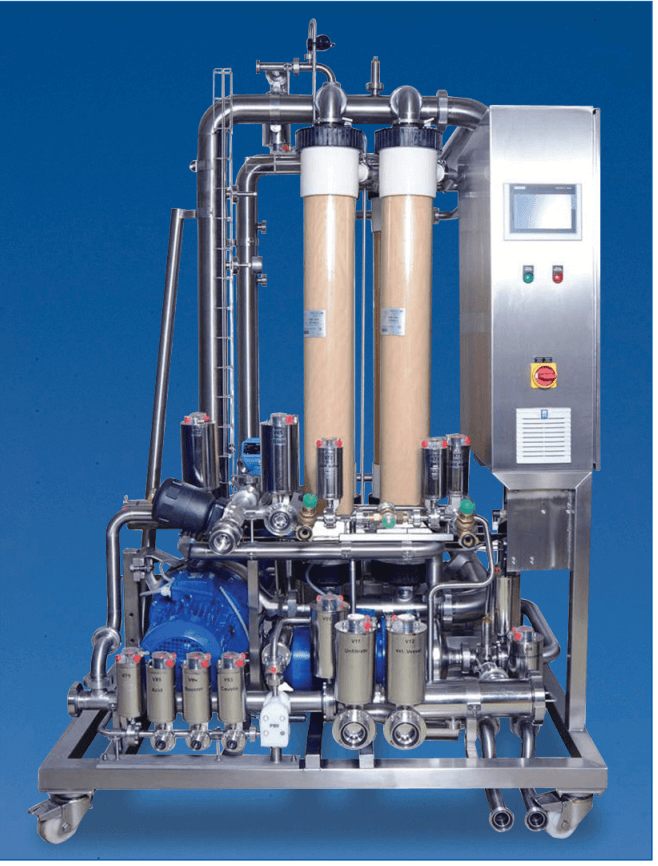小規模ワイナリーに最適なクロスフローろ過システム
製品名: エノフロー™ フィット
説明
エノフローフィットは、小規模ワイナリーでのワインの清澄化とポリッシュフィルター用に特別に設計された、新しいモジュール式クロスフローシステムです。構成要素である「モジュール」は、パズルのピースのように組み合わせることができ、各ワイナリーの作業ニーズに合わせてシステムを構成することができます。
エノフローフィット構成要素
大流量・大面積の中空糸型精密ろ過膜を2本使用したステンレス製のシステムがベースのシステムとなります。完全自動化されたユニットには「サイクル」プログラムが搭載されており、オペレーターの操作を最小限に抑えながらシステムの操作や洗浄を行うことができます。ご要望に合わせてシステムのカスタマイズが可能であり、ベースシステムにモジュラービルディングブロックを追加することができます
エノフローフィットのメンブレン
エノフローフィットの精密ろ過モジュールは、ポール社の実績ある対称型中空糸膜を採用しています。21.5平方メートルのフィルター面積を持つ大口径の高流量モジュールは、一般的な競合他社の中空糸モジュールに比べて2倍のフィルター面積を持っています。
コスト削減のメリット
珪藻土ろ過やシートフィルターをエノフローフィット・クロスフローろ過システムに置き換えることで、ワインメーカーはろ過助剤の使用や廃棄をなくし、ワインのロスを減らし、さらにろ過の安定性を高めることができます。エノフローフィットは新しいモジュール構造を採用しているため、成長中のワイナリーにもさらなるメリットを提供します。
- 予算に合わせてシステムを構成することができます
- 導入後、システムアップグレードのためにコンポーネントを追加して拡張することが可能です
- ワイン生産量の増加に対応し、後からモジュールを追加することも可能です
コンプライアンス
エノフローフィットシステムは、European Pressure Directivesに準拠して製造されており、各システムにはCEマークが付いています。
エノフローモジュールは、食品と接触する製品に関する特定の規制基準への適合性が確認されています。詳細については、ポール社にお問い合わせください。




